People in flood-hit areas urged to sign-up for phone alerts
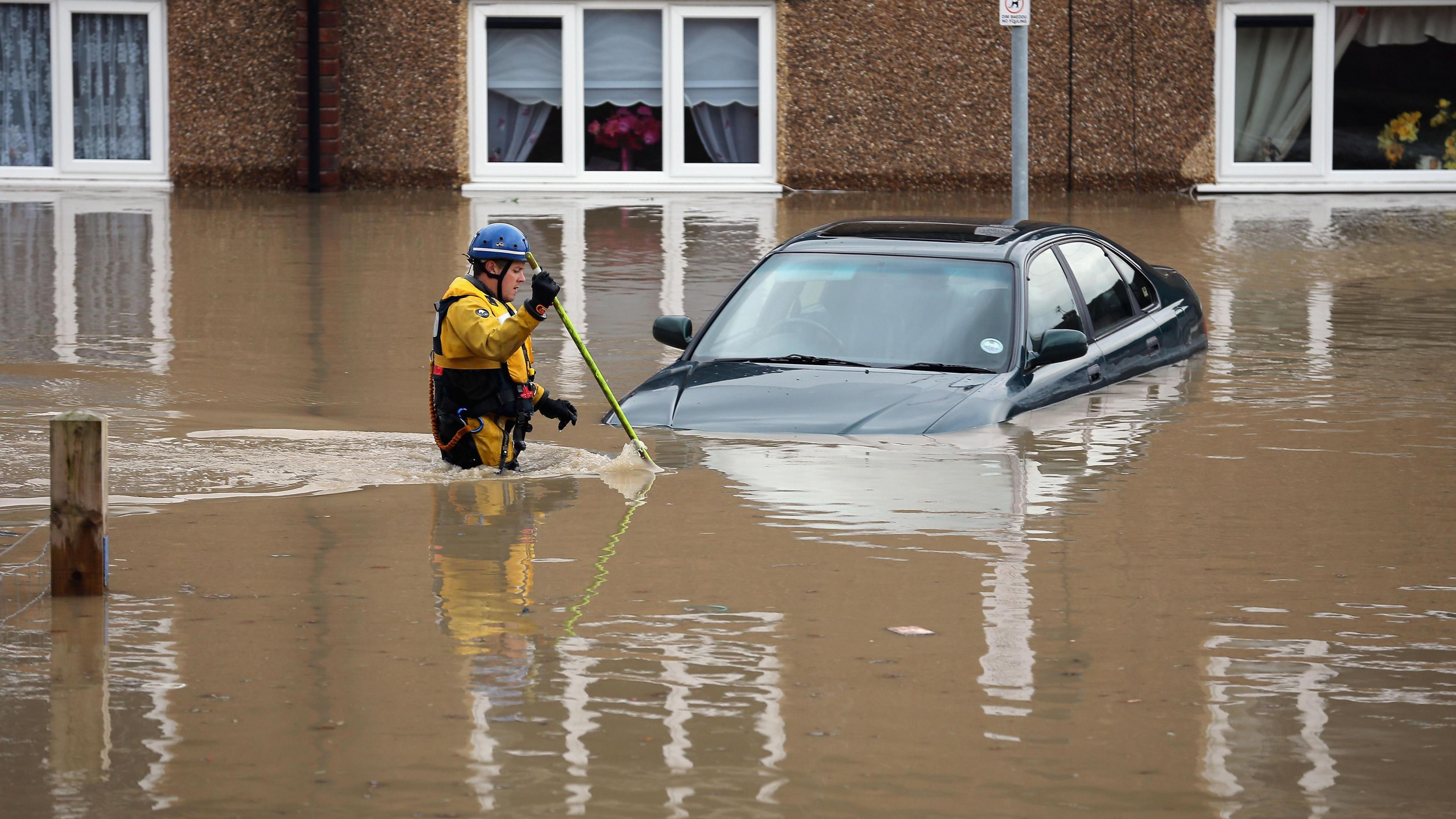
Around one in seven properties in Wales are at risk of flooding
- Published
People across Wales are being urged to sign up to an improved flood warning information system, after public engagement with the alert process was described as "worryingly low".
Climate Change Secretary Huw Irranca-Davies warned a rise in extreme weather events meant flooding "could happen anywhere", stressing it was "vitally important" communities were prepared.
One in seven homes and businesses across Wales are classed as being at risk of flooding.
"It's critical that those at risk are prepared... even if they have never flooded before - and that they take practical action now," said Ceri Davies, chief executive of Natural Resources Wales (NRW).
How are flood alerts and weather warnings set?
- Published25 November 2024
Devastating storms exposed gaps in response - report
- Published9 September
Anger over level and timing of storm weather warnings
- Published25 November 2024
Following a dry summer, heavy and persistent downpours throughout September mean river catchments are now "much wetter and more responsive to further rainfall", warns NRW.
Flood warnings were issued last month, with one of the main routes into Swansea submerged following heavy rain, while the first named storm of the season wrought havoc just two weeks ago, as 85mph gusts battered Wales.
Both NRW and the Met Office have been urging people to be prepared by ascertaining the flood risk level of their property, checking advice online and, crucially, signing up for alerts., external
A recent report by the Senedd's environment committee, external which looked at the impact of two of last winter's storms - Bert and Darragh - raised concerns over how few people across Wales were using the flood warning system.
"Public engagement with weather and flood warnings remains worryingly low in Wales," the report stated.
The committee was "particularly concerned about disparities in engagement among lower-income households and those who are digitally excluded - communities that are often the most vulnerable to flooding".
A British Red Cross survey, quoted in the report, suggested only 16% of respondents across the UK were signed up to receive flood warnings.
Of those not signed up, 36% of respondents in Wales said this was because "they did not know how to, or had not heard of them", despite many also living in areas that were deemed to be at high risk of flooding.
NRW said it had invested £5m in a new flood warning information system for Wales, making warnings a "quicker and more resilient process".
Footage shows cars submerged by floodwater on Cwmbwrla roundabout in Swansea
Councillor Arwel Roberts, chairman of Denbighshire council, is also a flood warden for the town of Rhuddlan, which has experienced repeated flooding in recent decades.
"I use social media to try and get the message out about how to prepare," he said, adding that it was "very important" people signed up to receive flood warnings with severe weather events likely to happen "more often".
"If they're not willing to do that then they're going to have more and more problems," he said.
In the past, floods were typically associated with properties near to a river or the sea, but a rise in episodes of torrential rain has increased the risk of flash flooding, Mr Roberts said.
Also known as surface flooding, flash floods occur when the capacity of the ground and drainage systems to absorb water is overwhelmed during intense downpours.

Councillor Arwel Roberts acts as flood warden in his local town of Rhuddlan, Denbighshire
Dr Will Lang, chief meteorologist at the Met Office said Wales faced an "increased flood risk" due to climate change, with the overall rise in temperatures leading to "more moisture in the atmosphere".
"The wetter winter trend will increase, and while summers may be drier, we will get more intense thunderstorms as well," he said.
Wales had already had a "very wet start to meteorological autumn", he added, with 50% more rain than the long-term average for the whole of September.
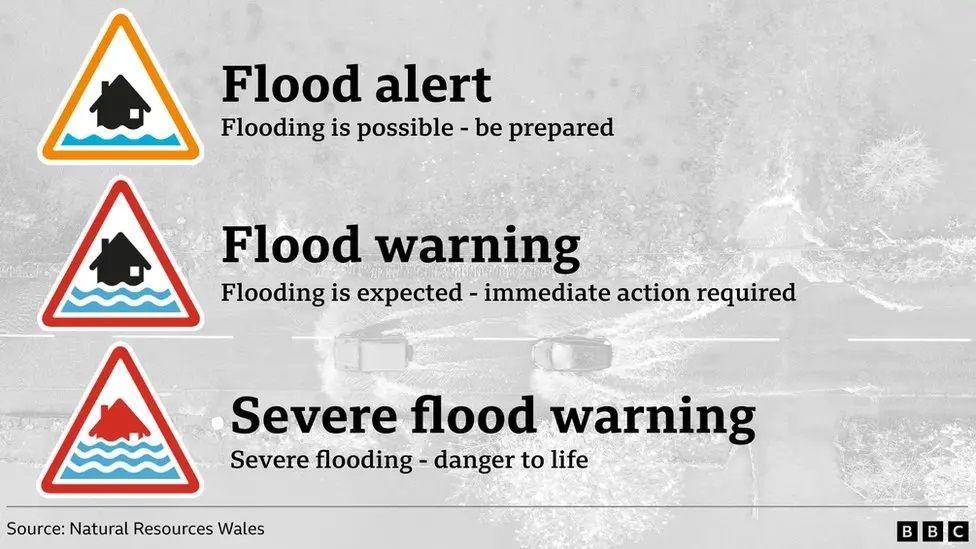
More than 700 homes flooded across Wales during last winter's storms
The NRW boss has called on residents across Wales to "understand more" about the flood alerts sent by the national warning system.
"It's a free service - and simply by signing up to it, you'll get information when we're starting to get concerned about flooding in an area," Ms Davies explained.
"We'll issue a flood warning when we're more certain that flooding is going to occur - and then, in more extreme cases, we provide warnings that there is a significant risk to life."
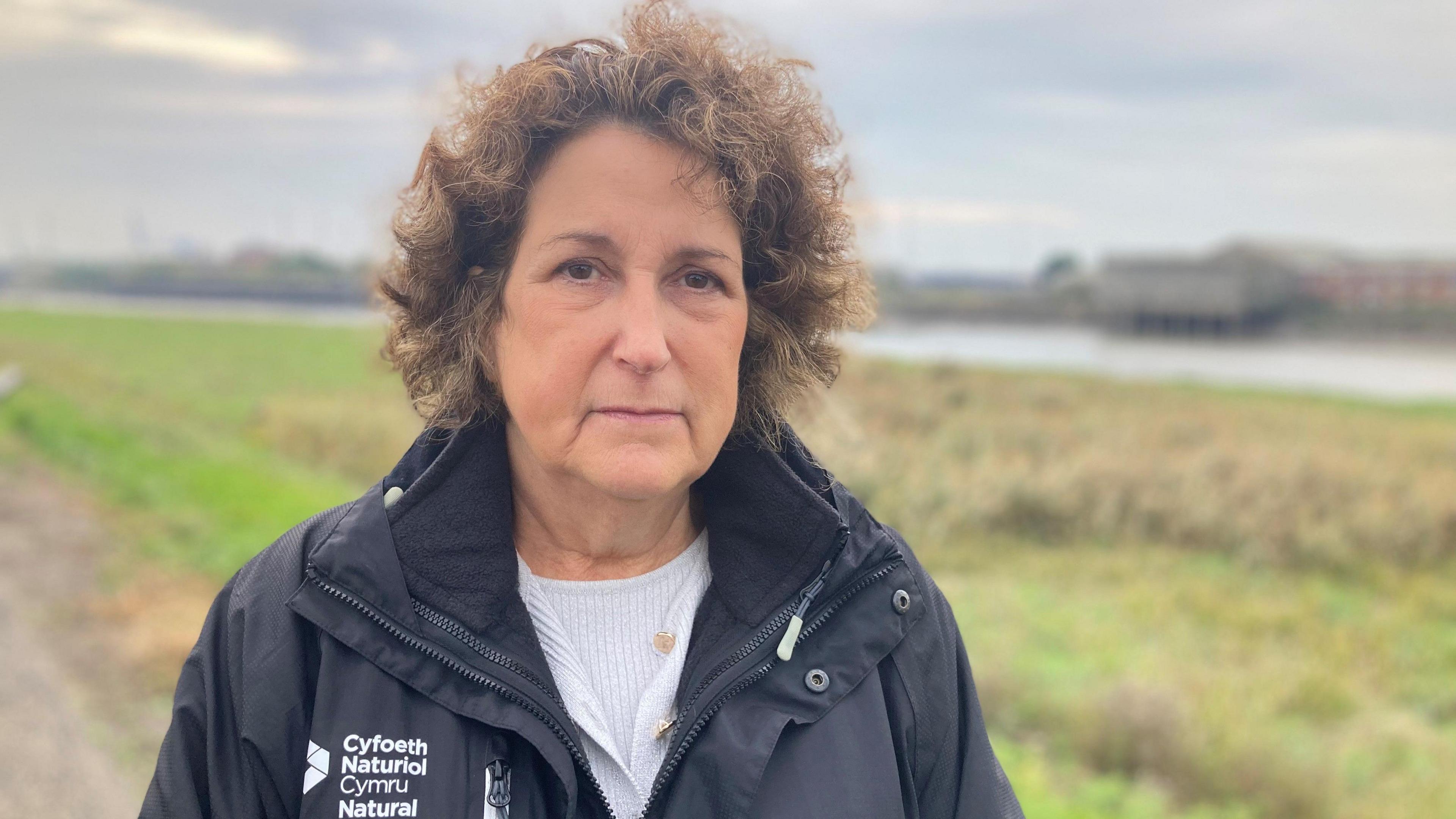
"Just because flooding hasn't happened to you before, doesn't mean it won't happen in the future," Ceri Davies warns
A series of new flood defence schemes have opened across Wales in recent weeks.
These include the £66m Central Rhyl coastal defences scheme - protecting 600 properties from flooding and coastal erosion, and the £25m Stephenson Street scheme - shoring up the banks of the River Usk in order to protect around 2,000 homes and businesses in Newport.
But Ms Davies warned the ongoing investment in flood defences would not work in isolation: "Building resilience within communities is also essential."
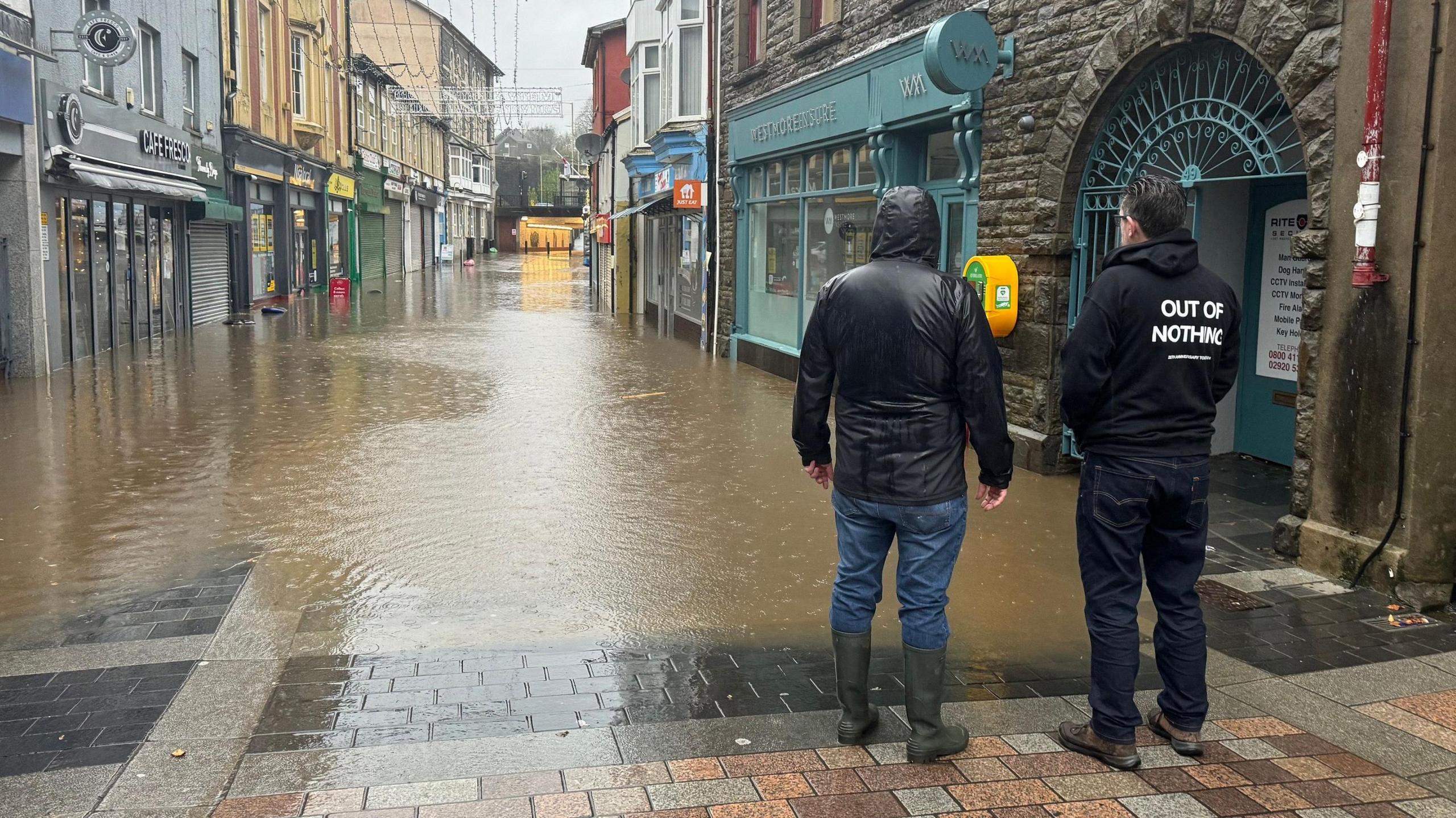
The town of Pontypridd has been repeatedly flooded in recent years
The Senedd's environment committee has warned of "critical gaps" in support for flood victims, resulting in "repeated hardship and unmet needs".
The flood warning system itself was also criticised in the wake of Storm Bert, after residents and local politicians in Pontypridd reported streets were already underwater by the time warnings were issued.
It led to NRW reviewing the level local rivers would have to reach before a flood warning for the town is triggered.
Mr Irranca-Davies said the Welsh government was investing record sums into flood prevention, but cautioned "everybody" had a responsibility to prepare.
"What we're learning more and more is it can happen anywhere - whether you have a house or a business on top of a hill, with flash flooding - as well as happening on the coastline or in a valley.
"With climate change and the increasing precipitation we're having, deluges happen more often - so please, please go and have a look at the information and sign up," urged the deputy first minister.
"We all have a responsibility to be flood-alert and flood-ready."
Related topics
More top stories
- Published14 October

- Published14 October
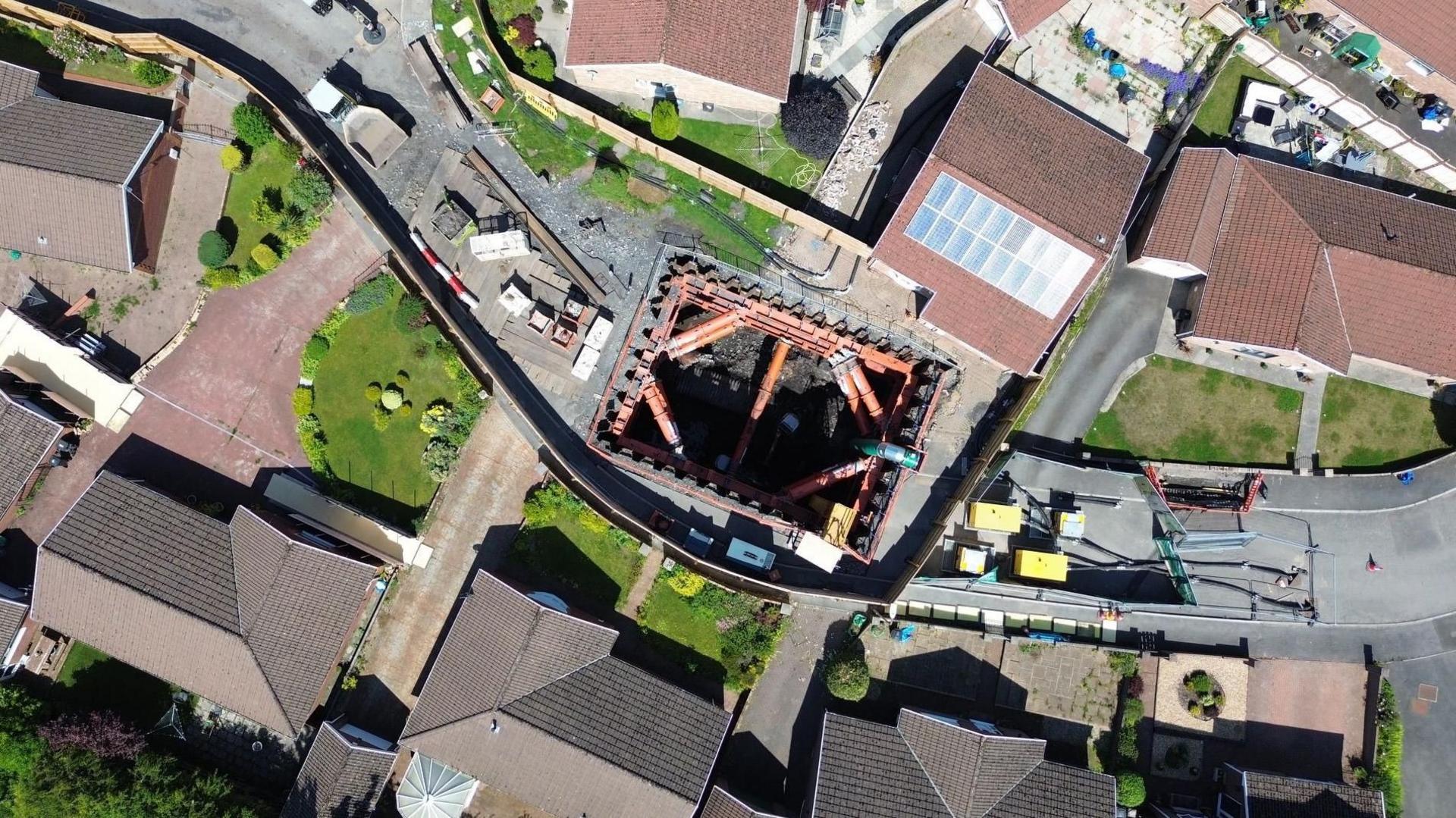
- Published14 October
